Cem Safak Sahin
A Comparison of Super-Resolution and Nearest Neighbors Interpolation Applied to Object Detection on Satellite Data
Jul 08, 2019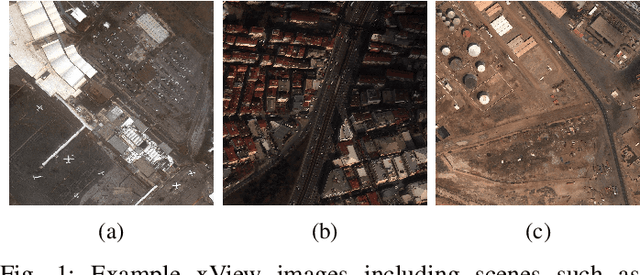
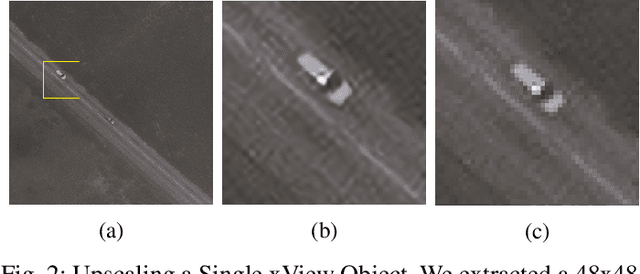
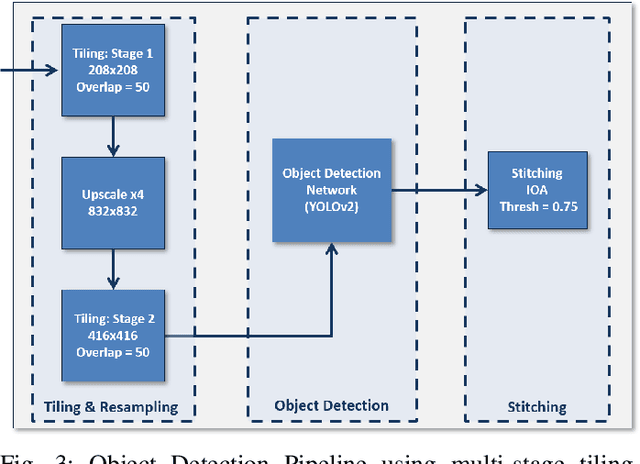
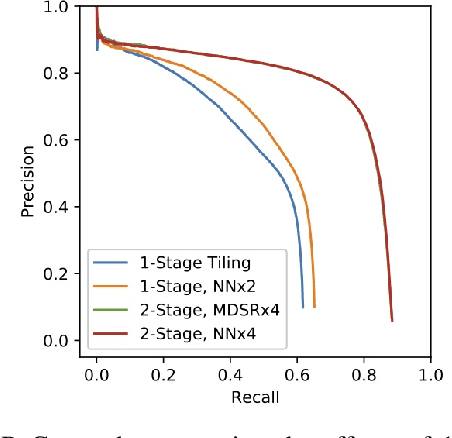
Abstract:As Super-Resolution (SR) has matured as a research topic, it has been applied to additional topics beyond image reconstruction. In particular, combining classification or object detection tasks with a super-resolution preprocessing stage has yielded improvements in accuracy especially with objects that are small relative to the scene. While SR has shown promise, a study comparing SR and naive upscaling methods such as Nearest Neighbors (NN) interpolation when applied as a preprocessing step for object detection has not been performed. We apply the topic to satellite data and compare the Multi-scale Deep Super-Resolution (MDSR) system to NN on the xView challenge dataset. To do so, we propose a pipeline for processing satellite data that combines multi-stage image tiling and upscaling, the YOLOv2 object detection architecture, and label stitching. We compare the effects of training models using an upscaling factor of 4, upscaling images from 30cm Ground Sample Distance (GSD) to an effective GSD of 7.5cm. Upscaling by this factor significantly improves detection results, increasing Average Precision (AP) of a generalized vehicle class by 23 percent. We demonstrate that while SR produces upscaled images that are more visually pleasing than their NN counterparts, object detection networks see little difference in accuracy with images upsampled using NN obtaining nearly identical results to the MDSRx4 enhanced images with a difference of 0.0002 AP between the two methods.
Consistent Alignment of Word Embedding Models
Feb 24, 2017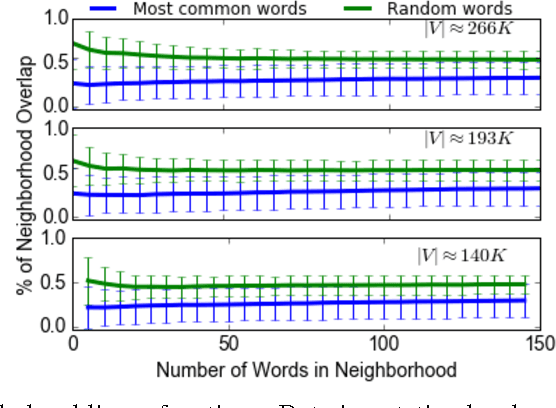
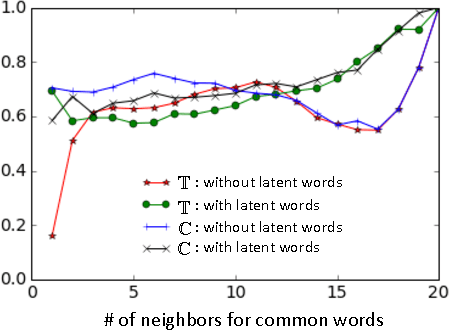
Abstract:Word embedding models offer continuous vector representations that can capture rich contextual semantics based on their word co-occurrence patterns. While these word vectors can provide very effective features used in many NLP tasks such as clustering similar words and inferring learning relationships, many challenges and open research questions remain. In this paper, we propose a solution that aligns variations of the same model (or different models) in a joint low-dimensional latent space leveraging carefully generated synthetic data points. This generative process is inspired by the observation that a variety of linguistic relationships is captured by simple linear operations in embedded space. We demonstrate that our approach can lead to substantial improvements in recovering embeddings of local neighborhoods.
 Add to Chrome
Add to Chrome Add to Firefox
Add to Firefox Add to Edge
Add to Edge